How many times a year can a cat give birth? Maria Dorosh answers the question like this: on average a cat gives birth to 2-4 litters per year. An animal can give birth to about 100 kittens in a lifetime.
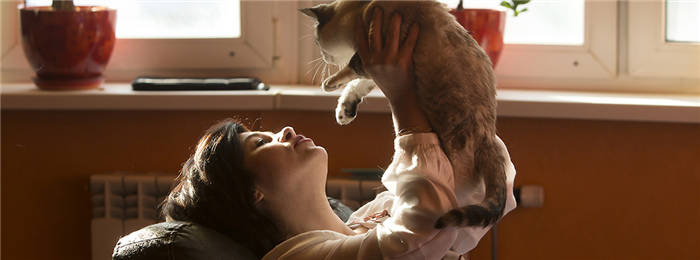
- A pregnant cat – what is important to know
- Signs of a pregnant cat
- At what stage can the pregnancy be determined
- General signs of pregnancy
- Cessation of her heat
- Changes in nipples and abdomen
- How to know if the cat is pregnant
- False pregnancy in cats
- The first days after
- Causes for concern
- First signs of a cat in labor
- How to arrange a place for a cat to give birth
- How to spot a pregnant cat
- Timing and peculiarities of cat pregnancy
- How to tell if your cat is pregnant
- Signs of readiness to conceive
- The presence of a mate
- Signs of pregnancy
- How to treat a pregnant cat?
- Is it possible to terminate a pregnancy?
- How to determine the beginning of labor
A pregnant cat – what is important to know
A sexually mature female domestic cat prepares for motherhood starting at 5 months from her birth. On average, a well-developed cat is ready to become a mother between 4.5 and 9 months. In some cases, the timing may differ, since all animals develop individually.
In addition, a number of factors affect puberty, such as size and body weight, breed predisposition, the health of the pet, and the length of daylight hours.
Estrus or puberty (the period when a cat is ready to mate and continue reproduction) occurs differently in everyone, but is characterized by a certain behavior. For example, a sexually mature female ready to be inseminated exhibits anxiety, demands increased attention from her owner, may refuse food and try to run away from home.
When a cat is in heat, it archs its back and assumes a mating position, meows invitingly and rolls on the floor.
When a cat is pregnant, the owner can tell if the cat is pregnant by changes in the cat's behavior. A qualified specialist can accurately determine the presence of fetuses in the uterine cavity on the basis of palpation and ultrasound findings. From day 21 onwards, the kittens can be felt very well in the uterus.
In addition to instrumental examinations, the attentive owner will be able to determine if the cat is pregnant by specific signs – swollen breasts, depression, toxicosis, and frequent urination. There are also a number of other symptoms that indicate that the pet is expecting a new addition.
Signs of a pregnant cat
It is quite difficult to know that a cat is pregnant at the earliest terms by changes in behavior. The entire period of carrying kittens takes an average of 60 to 65 days, but the characteristic changes are determined from 4 weeks.
The first signs of pregnancy in a cat are characterized by the following points:
- Increased sleepiness. The animal begins to sleep more than usual. The cat's total sleep duration increases by 3-4 hours. In the non-pregnant state, the animal sleeps about 13 hours.
- Change in food preferences. You can tell that the cat is pregnant for the first time by the way the cat's eating habits change. Thus, the cat with great pleasure switches to liquid foods – broths, milk and plain water. At the same time, it refuses to eat the solid food it used to love. In general, this is due to hormonal restructuring and a general decrease in body strength.
- Hyperemia in the area of the mammary glands. Mammary glands with the onset of pregnancy become swollen, swollen, hot to the touch. There may be a change of color from red to coral. This sign allows you to determine if the cat is pregnant for the first time.
- Nausea. Is observed in cats less often than in other pets – dogs. As a rule, toxemia accompanies the first pregnancy of a young cat. The discharge of saliva, accompanied by nausea, is observed several times a day, more often in the morning.
As the pregnancy progresses, the signs increase, and from the 3rd week the normally developing fetuses reach such a size that their thrusts become noticeable. A pregnant cat eats more and tries to rest as much as possible. An ultrasound scan is performed at an early stage if it is necessary to detect a suspected pregnancy in a cat.
Cats with light skin and coat acquire special pigmentation in the area of mammary pouches. Pigmented spots on the skin near the nipples are called pregnancy spots. When the cat's nipples are lightly pressed during pregnancy, a specific fluid, first-born milk (colostrum), is secreted. The body of the animal also changes visually, which cannot go unnoticed by the caring owner.
At what stage can the pregnancy be determined
So, how do you know if a cat is pregnant. The owner can determine if the cat is pregnant from 28 days – during this period, the female has an increase in the circumference of the abdomen, swollen nipples, changes in behavior, and the cessation of heat.
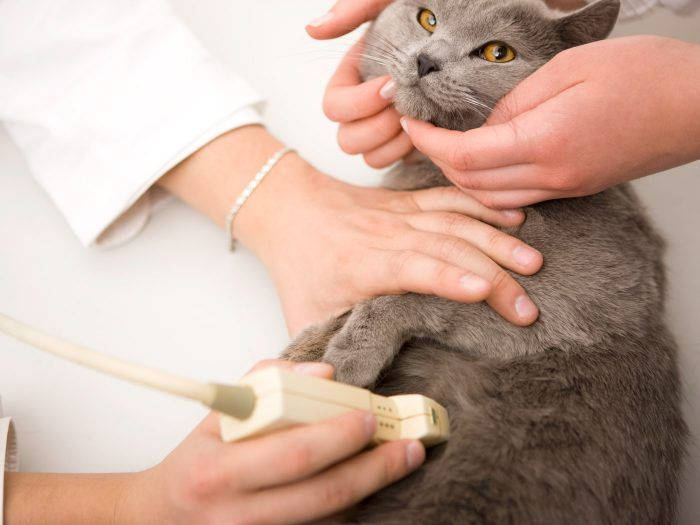
By consulting a doctor, pregnancy can be detected from about 20 days after fertilization. This is done by ultrasound, which will determine with great accuracy the presence or absence of fetuses in the uterus.
Unlike humans, cats do not secrete hCG hormone into the blood, but placenta relaxin is secreted instead. This hormone can be tested from day 20 after mating. False positive results are possible if the animal has an ovarian cyst.
From the 28th day, the first moving of the offspring can be noticed. Palpation by palpation of the lateral walls of the abdomen can also be performed during this period.
X-rays of the abdominal cavity are taken after 50 days of pregnancy. The method reliably diagnoses the fertilization that has occurred, and also allows you to determine the number of offspring and their position.
General signs of pregnancy
After mating, the owner should carefully monitor the cat's condition, since the appearance of uncharacteristic symptoms may indicate abnormal pregnancy. In addition, intercourse sometimes does not result in fertilization, resulting in the need for additional mating.
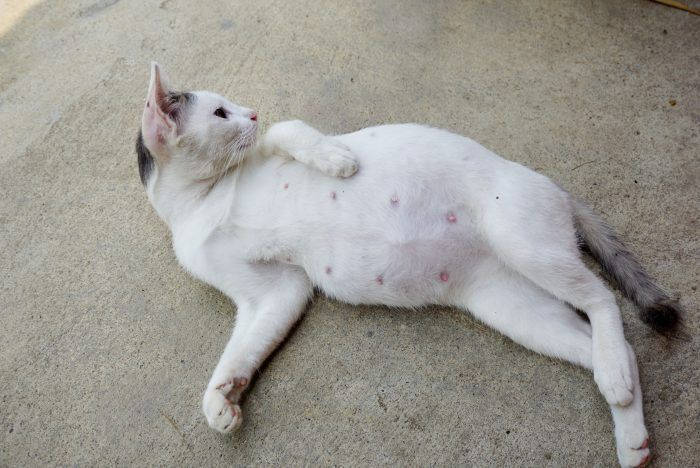
The most informative signs of pregnancy include an increase in the size of the abdomen, changes in behavior, cessation of heat and some other manifestations.
Cessation of her heat
Heifing refers to the manifestation of a period of arousal in the sexual cycle. The processes that accompany this stage are aimed at changing both the behavior and the condition of the cat's genital tract, which will facilitate the attraction of the male and fertilization. Accordingly, in case of successful conception, continuation of the heat is not advisable, so the signs of arousal disappear – the mucous membranes of the vagina lose hyperemia, the secret stops to be secreted from the loop.
If the heat continues after mating, it indicates a failed pregnancy. If the absence of conception is confirmed, the breeder will have to resort to re-mating the female.
Changes in nipples and abdomen
The earliest sign of pregnancy in a cat is a rounding of the abdomen due to the increased size of the uterus as a result of fetal growth. The sign is usually detected after one month from the day of mating. The rate of growth of the abdomen, as well as its size, depends on the individual characteristics of the female, the number and size of offspring. During this period, the first stirring can be detected by palpation. This is done by gently palpating the sides of the abdomen.
The change in nipple pigmentation begins from the first days after conception. The color becomes brighter, the maximum pink color they acquire in the last terms. The greatest change in coloration is characteristic of the first pregnancy in a cat. As parturition approaches, the nipples swell, which is a preparation for breastfeeding the offspring. Such changes are caused by the action of hormones.
How to know if the cat is pregnant
Observe the cat. The first signs of pregnancy in cats are associated with changes in behavior and appearance and appear as early as 2-3 weeks from the date of intended mating.
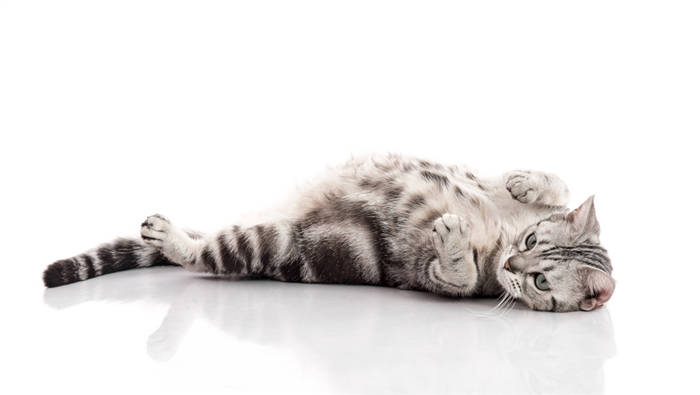
Increased sleepiness. The animal sleeps a lot, is reluctant to play moving games and walks slowly.
Change of behavior. An affectionate and sociable cat may become wary and even aggressive, and independent and aloof, on the contrary, constantly ask to hold hands and demand attention. Changes in her behavior are due to a change in her hormones. After the birth of kittens and the completion of lactation, the character of the pet becomes the same.
Delayed sexual cycle. If the heat was regular, and stopped immediately after the mating, the probability of pregnancy is very high.
Nausea. Usually a pregnant cat vomits only in the morning. If vomiting recurs more often and lasts more than 2-3 days, see your veterinarian.
Change in appetite. During the first half of a domestic cat's pregnancy, the pet's appetite may decrease and, conversely, become atypically good during the second half. The cat may refuse its usual food and show interest in something new. During this period, the cat needs high-energy food that can make up for the deficiencies that occur.
Changes in the color and size of the nipples. Pregnant cats' nipples swell and become bright pink or coral red in color, and the hair around them thins.
Rounded belly. The changes will be noticeable both when viewed from above and in profile. But most likely only with a multiple pregnancy (more than 5 kittens). The main thing is not to try to palpate the fetuses with your fingers yourself. This can traumatize both the fetus and the mother cat.
False pregnancy in cats
The first factor of false pregnancy of domestic cats is physiological. For example, a serious hormonal failure against the background of stress or congenital pathology of the organs of the reproductive system. In this case, false pregnancy in cats can occur systematically after each mating, and the cat will have to be sterilized immediately.
The second factor of false pregnancy in cats is psychological. For example, an unsuccessful mating at the end of the cycle, "covering" with a sterile or sick cat, or the neighborhood with other pregnant cats. In the wild, animals live in packs, and a false pregnancy is needed to nurse cubs in case the biological mother dies. While domestic cats, false pregnancies are only detrimental.
The first days after
Sometimes owners rush to the vet to show their pet. And here it is the task of the specialist to tell how the cat behaves after the mating. For a few days she will look tired, spending time in her lodge. This does not indicate that she is sick. It's just that mating is an extremely energy-consuming process. The puppy now has to sleep it off and recuperate.
But you shouldn't let your guard down completely either. If the animal is just sleeping it off, leave it alone. Worse, if this is accompanied by fever, vomiting or diarrhea. This already indicates that the mating was against the background of a progressive disease. Normally, you may notice a change after a few days. The cat awakens a remarkable appetite. However, you cannot say for sure if the cat is pregnant just by how it behaves after the mating.
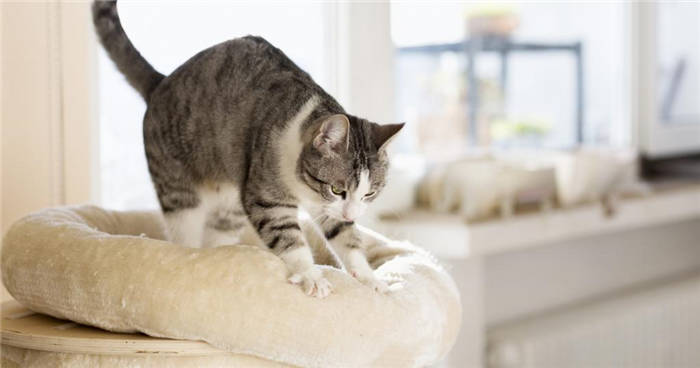
Causes for concern
Let's dwell on this point a little more, since the issue is related to the life and health of your pet. If after the mating your pet acts as if he is sick, up to and including vomiting, diarrhea, fever, there are several reasons for this:
- Stress reaction. The presence of the male, moving.
- Digestive disorders due to eating habits, if the animal was given to mate in another home.
- The possibility of a toxic infection is not excluded. It has nothing to do with the mating.
- Before mating, make sure the male has been vaccinated against the most dangerous diseases. There are a number of bacterial or viral infections that can be sexually transmitted.
If the cat does not eat for more than two days after mating, then the cause is more serious than it first appears. It is especially important to see the vet as soon as possible if the cat refuses water.
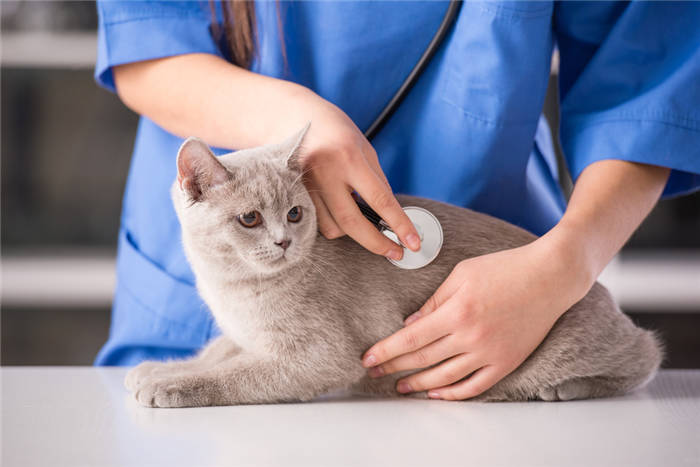
First signs of a cat in labor
The harbingers of an imminent birth of kittens come in two varieties: behavioral and physiological. Let's break down both of them in relation to the time at which they can be noticed:
1 week before delivery. The cat is actively looking for a secluded quiet place and spends a lot of time there. Some pets will put rags, wipes, or towels there. But this is not necessary.
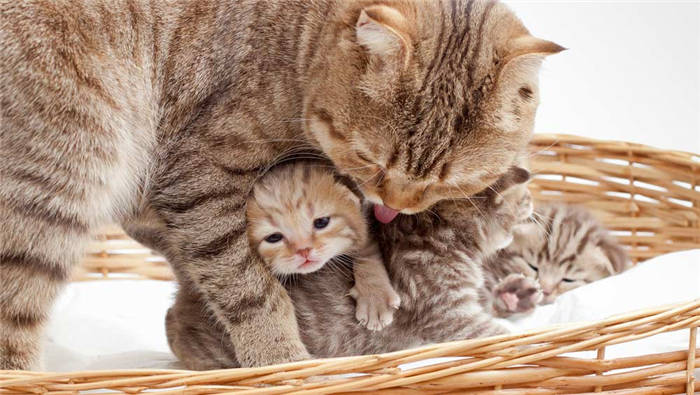
When examining the nipples of the mother-to-be, you can notice that they are enlarged in size and the skin in their aureole is peeling. These are signs of early production of colostrum, a mammary gland secretion rich in antibodies to form the primary immunity of the cubs.
The cat's general behavior expresses nervousness. The animal may become aggressive and irritable or, conversely, atypically sociable and affectionate.
2 to 3 days before delivery. The cat loses its appetite and drinks little. Eaten food begins to put pressure on the uterus and cause the animal discomfort. Therefore, the daily portion is not eaten completely, and the pet often screams immediately after feeding.
1-2 days before delivery. The cat follows the owner on his heels and attracts his attention with his voice.
At the same time, you can notice that colostrum begins to emerge from the nipples, and mucus plug begins to emerge from the loop. If the pregnancy proceeds without abnormalities, the mucus will be transparent with small streaks of blood. If something has gone wrong – cloudy, with an unpleasant smell, yellowish or green. If mucus of atypical color and consistency is found, seek immediate medical attention. This may be a sign of kitten death, an infection of the birth canal or uterine inflammation.
1 day before delivery. Body temperature drops 1 degree (to approximately 37-37.5 degrees). To track the temperature drop relative to the usual norm, the owner will need a chart of its fluctuations over the previous week. Measurements are taken rectally or with an ear thermometer. But its readings are less accurate.
How to arrange a place for a cat to give birth
A quiet, warm room without drafts or direct sunlight is needed to create a comfortable birthing environment for a cat.
The birthing place (nest) should be isolated from other animals and small children. Usually it is a cardboard box, basket or special maternity box from a pet store, covered with disposable diapers or rags.
Do not cover the nest with newspaper, terry towels, gauze or absorbent cotton. Printing ink causes poisoning in babies. And the loops and fine lint on the fabric clings to the claws and clogs the cat's airway.
How to spot a pregnant cat
Cats become sexually mature at 6 to 8 months of age. Maturity period depends on many factors: breed, climate, feeding, housing and care conditions. Ekaterina Konstantinova in her book "House Cats" tells that if you do not give a cat a partner during ovulation, it will constantly remind about itself by loud meowing and other manifestations of reproductive instinct. Some cats begin to go to the toilet in inappropriate places, becoming aggressive.
How do you know if a cat is pregnant? The first signs of pregnancy (changes in the behavior and appearance of the animal) appear on 2-3 weeks from the date of mating. Here are the characteristic signs:
- Delayed sexual cycle. If a cat's heat was regular (once every 2-3 months) and stopped after mating, the probability of pregnancy is quite high.
- Changes in color and size of nipples. Nipples of pregnant cats swell up and become bright pink or coral-red in color, and the hair around them thins. It should be borne in mind that the mammary glands of many cats swell after the heat, so this sign is considered in conjunction with other signs of pregnancy.
- Change of behavior. It is associated with a restructuring of the hormonal background. An affectionate, quiet and sociable cat might become aggressive, whereas her independent and aloof behavior will beg for attention. After the birth of kittens and the end of feeding the pet's character will be the same.
- Increased sleepiness. A cat in the early stages of pregnancy walks slowly, sleeps a lot, reluctant to play.
- Change in appetite. The author of the book "Veterinary Handbook for Cat Owners" Maria Dorosh notes: A pregnant female changes her metabolism soon after fertilization and has a good appetite. The need for energy increases fourfold. At the same time the cat may refuse the usual food and show interest in something new. During this period the cat needs high-energy food that can make up for the deficiencies that arise.
- Morning nausea and vomiting. These symptoms occur in some cats during the 3-4 week gestation period and are related to the stretching of the growing uterus and hormonal changes.
- The coat becomes smooth and shiny, and the body shapes take on a rounded shape.
- Weight gain. As Julia Sergienko notes in the book "Your Cat," a slight increase in weight is noted in the first 30 days of pregnancy. For the whole period of carrying the offspring, depending on the number of fetuses and their size, a cat will put on average 1 to 2 kg.
Timing and peculiarities of cat pregnancy
Igor Akimushkin in his work "Pets" calls the cat a prolific animal. How long does a cat's pregnancy last? On average, her pregnancy lasts 50-60 days. A cat's gestation period can extend to 68 days or more. The length of pregnancy is significantly affected by the number of fetuses:
A cat's gestation period is commonly thought of as weeks. Each week from the time of conception has its own characteristics and characteristic signs:
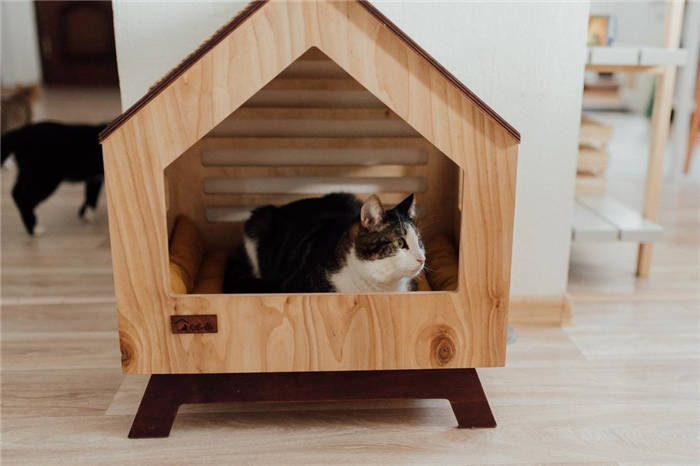
- The first week is most often asymptomatic. It is almost impossible to determine if fertilization has occurred.
- The second week. At this term, the eggs reach the body of the uterus, which marks the beginning of the formation of the fetus.
- Third week. During this period, the embryos begin the process of development of internal organs. The sharply changed hormonal background of the cat affects its mood, behavior and physiological features. It is necessary to closely monitor the pregnant's condition: an increased frequency of vomiting may worsen her well-being, and a veterinarian's consultation will be required.
- Fourth week. An experienced veterinarian, when examining by palpation, can already identify the babies in the womb of the cat. To clarify, an ultrasound examination is performed to hear the fetal heartbeat. During this period, you should not take the cat in your arms unnecessarily, press on her belly.
- Fifth week. Kittens are growing rapidly, but their exact number, even with ultrasound is difficult to determine, especially if the fetuses are more than 4.
- Sixth and seventh week. The cat's abdomen is rounded, the kittens begin to move in her womb. The cat's appetite increases, her well-being improves. Feed the expectant mother should be abundant, the food should be nutritious and balanced.
- Eighth-ninth week. The cat begins to look after itself intensively, its appetite decreases. As she does so, she begins to prepare a hiding place for the birth.
How to tell if your cat is pregnant
This article is co-authored by Natalie Punt, DVM, our regular contributor. The regular contributors to wikiHow work closely with our editors to ensure that the articles are as accurate and complete as possible.
Number of sources used in this article: 7. You will find a list of them at the bottom of the page.
Typically, a cat's gestation period lasts about nine weeks, with changes in the animal's physical condition and behavior evident soon after gestation begins. [1] X Source of Information Knowing how to identify these changes will help you know if your cat is pregnant. However, the best and most sure-fire way is, without a doubt, a visit to the veterinarian. It is advisable to sterilize the cat unless you breed cats professionally, since due to the large number of stray animals, many of them are euthanized.
Signs of readiness to conceive
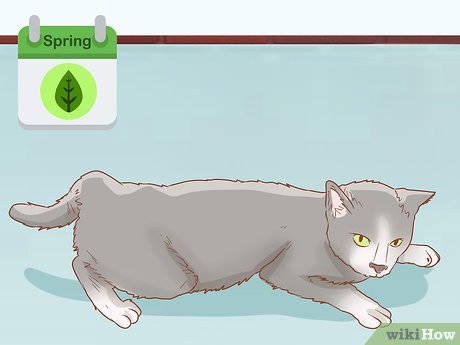
- As a rule, the sexual activity of domestic cats increases with the duration of daylight hours and warming, i.e. in spring and summer.
- Periods of heat (fertility readiness) can begin in a cat when it reaches about 80% of its weight at maturity, and begin usually with warming weather. This means that in some, rather rare cases, a cat may start her heat as early as four months of age.
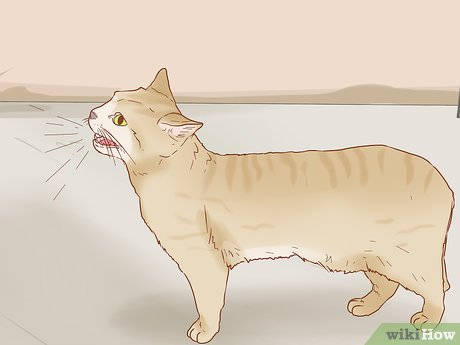
- Before the onset of heat, the cat begins to show signs of anxiety, becomes more affectionate, it makes low noises and exhibits an increased appetite. [3] X Source of information
- With the onset of heat the cat begins to "howl", i.e. to purr and meow frequently and persistently; at the same time the animal often loses its appetite.
- During the heat period the cat becomes much more affectionate to people; it rolls on the floor and also mounts its back up, stomping on it with its hind legs and hanging its tail to its side. [4] X Source of information [5] X Source of information
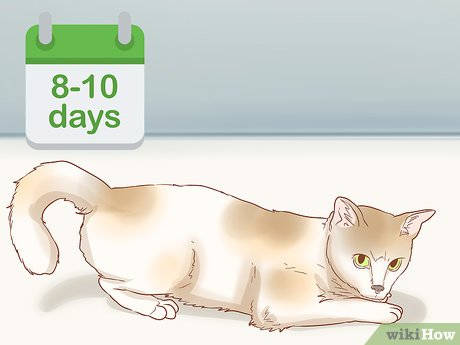
- If you notice that your cat has recently been in heat, it is possible that she has become pregnant.
- After the heat period, the cat goes through a "quiet phase," lasting about 8-10 days, during which time the animal calms down. However, this phase is followed again by a heat phase, and this can go on from April until September. [6] X Source of Information
- To prevent periods of heat and unwanted pregnancies, the cat should be spayed by choosing the right time for the operation.
The presence of a mate
Naturally, if the cat is not in contact with other cats, she will not be able to get pregnant. Even the presence of heat and other symptoms will not make a cat pregnant. Only an un neutered cat will.
The addition of the day in spring forces the hormones to rearrange from the dormant winter to an active lifestyle. Sex drive in animals is especially acute from late February to mid-October. The accuracy depends on the climate, because in some cities even in October it can be hot, while in others, October is already winter with snow. When it comes to breeding mating, however, the process is year-round.
Signs of pregnancy
Signs appear within 2-3 weeks of fertilization.
During the period of heat, the cat is restless, it caresses all the household, it makes an uncharacteristic meow. When mating has occurred, you may notice calmness and frequent sleepiness. She will refuse to play around, but petting is not alien to her. Also the movement around the apartment will be reduced and the future mother will refuse to walk "tail" behind the mistress.
During the pregnancy of a cat special attention should be paid to proper nutrition. Pay attention to the special food for pregnant and nursing cats and kittens up to 4 months.
Dry food Royal Canin Mother & Babycat for pregnant and lactating cats and kittens up to 4 months, 0.4 kg – buy online store at low price on Yandex Marketer
How to treat a pregnant cat?
The most important thing is to provide her with a calm environment. It is desirable not to take her anywhere at this time, not to arrange repairs and rearrange the house.
You must feed her without restrictions. Food should not be changed, so as not to cause an upset stomach during pregnancy.
Of course. In no case she should not be petted and dragged. In general, a pregnant cat, especially in the second month of pregnancy, cannot be grabbed on the hands, by the belly. If you really need to carry the cat, take her gently under her hind and front paws, not by her belly.
Tip: In the first month of pregnancy you should give your cat folic acid a quarter of a tablet once a day. Or half a tablet every other day.
Calcium preparations should be started two weeks before the birth. This will eliminate the possibility of the cat developing postpartum eclampsia.
Note: This is a condition where the cat is restless, dragging the kittens back and forth, in particularly severe cases it comes to convulsions.
So the calcium preparations will keep the cat and future kittens healthy.
How to understand that the cat is about to give birth, and how to prepare for the birth of a cat – we will consider in the next article.
And when kittens are born they can be helped to suckle the nipples as shown in this video.
Julia, the owner of the cattery, an expert on the education of cats, author of "How to live with a cat" Whatsapp +79196096404
Is it possible to terminate a pregnancy?
Abortion adversely affects the reproductive function and health of the animal. Veterinarians recommend avoiding it. Surgical abortion with sterilization has the least consequences. It is performed in the first 6 weeks after conception, but it is safer to have it in the first 2-3 weeks. During the operation, the animal's uterus and ovaries are removed.
Self-administration of abortifacients is dangerous, so always seek help from a veterinary clinic. In the presence of a serious pathology, a natural abortion occurs, that is, the fetus dies on its own inside the womb. In this case, the veterinarian should make sure that all kittens are out of the uterus.
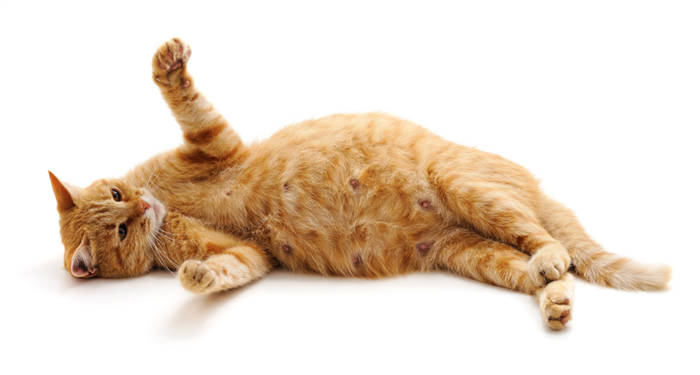
How to determine the beginning of labor
After figuring out that the cat is pregnant, it remains to understand how to know the early onset of labor. Shortly before labor is observed:
- abrupt loss of appetite;
- Frequent meowing that attracts the owner's attention;
- A drop in temperature to 37°C;
- constant licking of the loop;
- Lowering of the abdomen with assumption of a pear shape;
- arching of the back;
- increased frequency of urination;
- Swelling of the mammary glands and discharge of colostrum.
After these signs appear, make sure that you have completed all important chores. Stay close to your pet and keep an eye on her in case of force majeure.
Knowing how to tell if a cat is pregnant eliminates complications related to pseudo-pregnancy and gives you time to prepare for the birth of kittens. Don't neglect your veterinarian's diagnosis. The earlier you find abnormalities, the easier it is to prevent them.
This article is for informational purposes. Talk to your vet!






